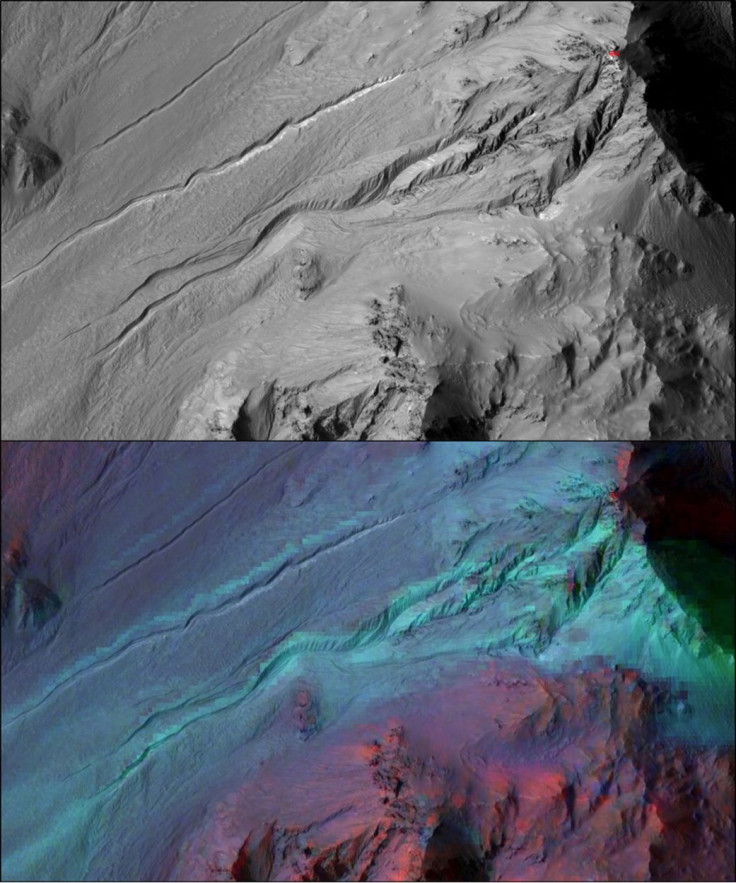Mars Gullies Were Probably Not Made By Flowing Water, NASA Says

In 2014, scientists at NASA announced that the gullies on Mars’ surface — whose discovery in 2000 caused widespread excitement among many who perceived them as evidence of flowing water — were formed by the seasonal freezing of carbon dioxide. Now, two years later, further analysis of data gathered by the Mars Reconnaissance Orbiter (MRO) bolsters the case against the structures being formed by flowing liquid water.
Researchers from the Johns Hopkins University Applied Physics Laboratory (APL) in Laurel, Maryland, examined high-resolution data gathered by the MRO from more than 100 gully sites throughout Mars, and found no mineralogical evidence for water or its by-products. These findings, detailed in a study published in the Geophysical Research Letters, would now allow scientists to narrow their theories about how the Martian gullies form.
It is important to note that these gullies are distinct from the "recurring slope lineae" on the surface of the red planet whose discovery was first announced last year. RSL — which appear as dark lines that extend downslope during a warm season and fade away during colder parts of the year — are believed to have formed, at least in some cases, by flowing water.
Martian gullies, on the other hand, mostly occur between 30 and 50 degrees latitude in both the northern and southern hemispheres, and only look like they were formed by flowing liquid water.

"The HiRISE team and others had shown there was seasonal activity in gullies — primarily in the southern hemisphere — over the past couple of years, and carbon dioxide frost is the main mechanism they suspected of causing it. However, other researchers favored liquid water as the main mechanism," lead author Jorge Núñez from APL said in a statement. "What HiRISE and other imagers were not able to determine on their own was the composition of the material in gullies, because they are optical cameras."
HiRISE — High Resolution Imaging Science Experiment — is one of the six science instruments on board the MRO. Its camera operates in both visible and near-infrared wavelengths, and thus allows high-resolution images of surface features between 4 to 8 feet across to be captured from an altitude of up to 250 miles.
For this study, the researchers collected data by the orbiter's Compact Reconnaissance Imaging Spectrometer for Mars (CRISM) instrument, which allowed them to look at the kinds of minerals that were present in the gullies.
"On Earth and on Mars, we know that the presence of phyllosilicates — clays — or other hydrated minerals indicates formation in liquid water," Núñez said. "In our study, we found no evidence for clays or other hydrated minerals in most of the gullies we studied, and when we did see them, they were erosional debris from ancient rocks, exposed and transported downslope, rather than altered in more recent flowing water."
So, while there seems to be a good amount of evidence that water once flowed on the now-parched surface of the red planet, the question of whether it still exists remains, for now, unresolved.
© Copyright IBTimes 2024. All rights reserved.






















